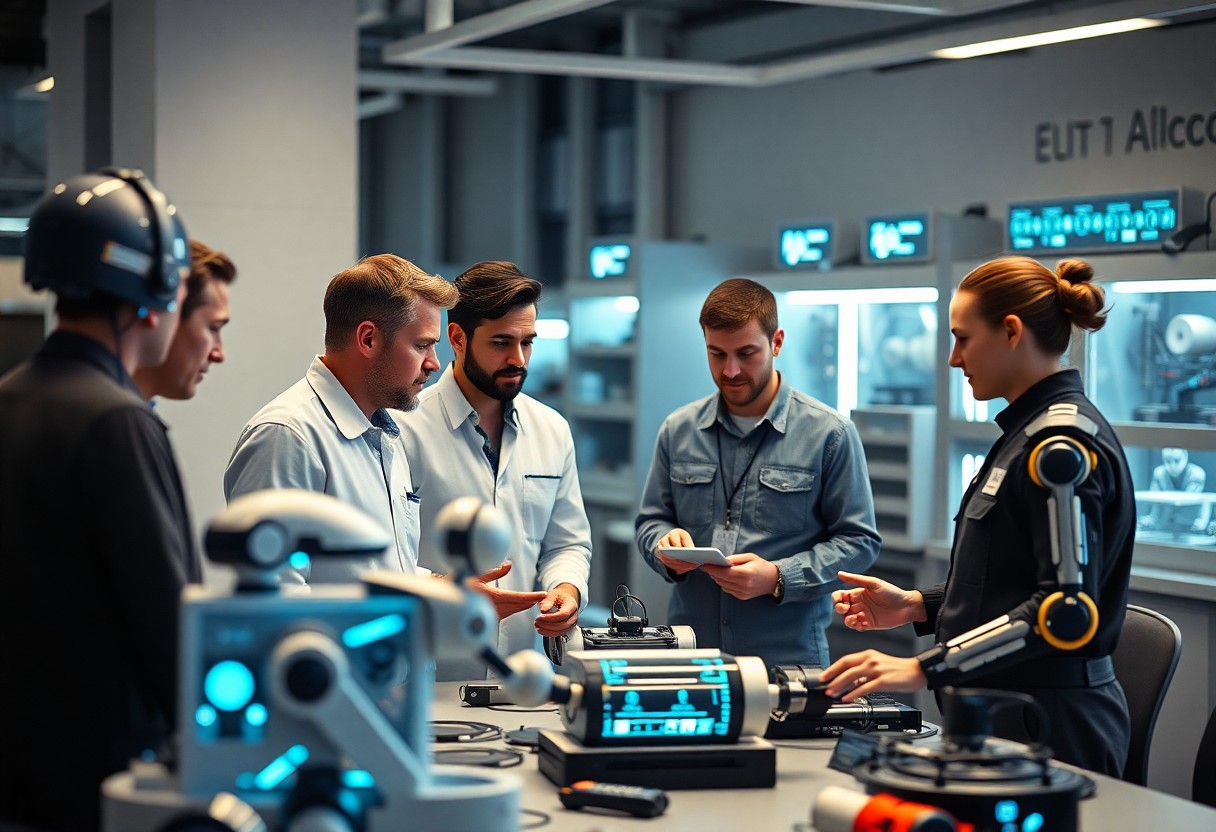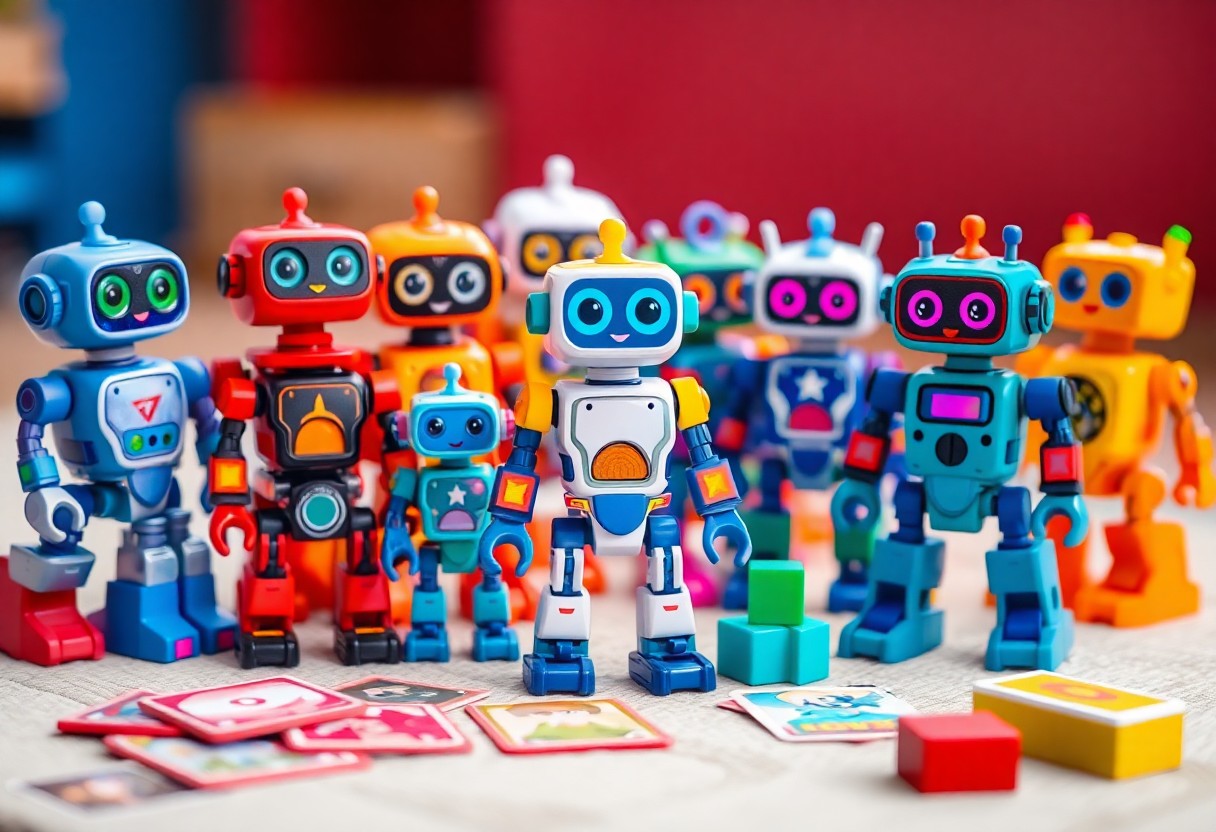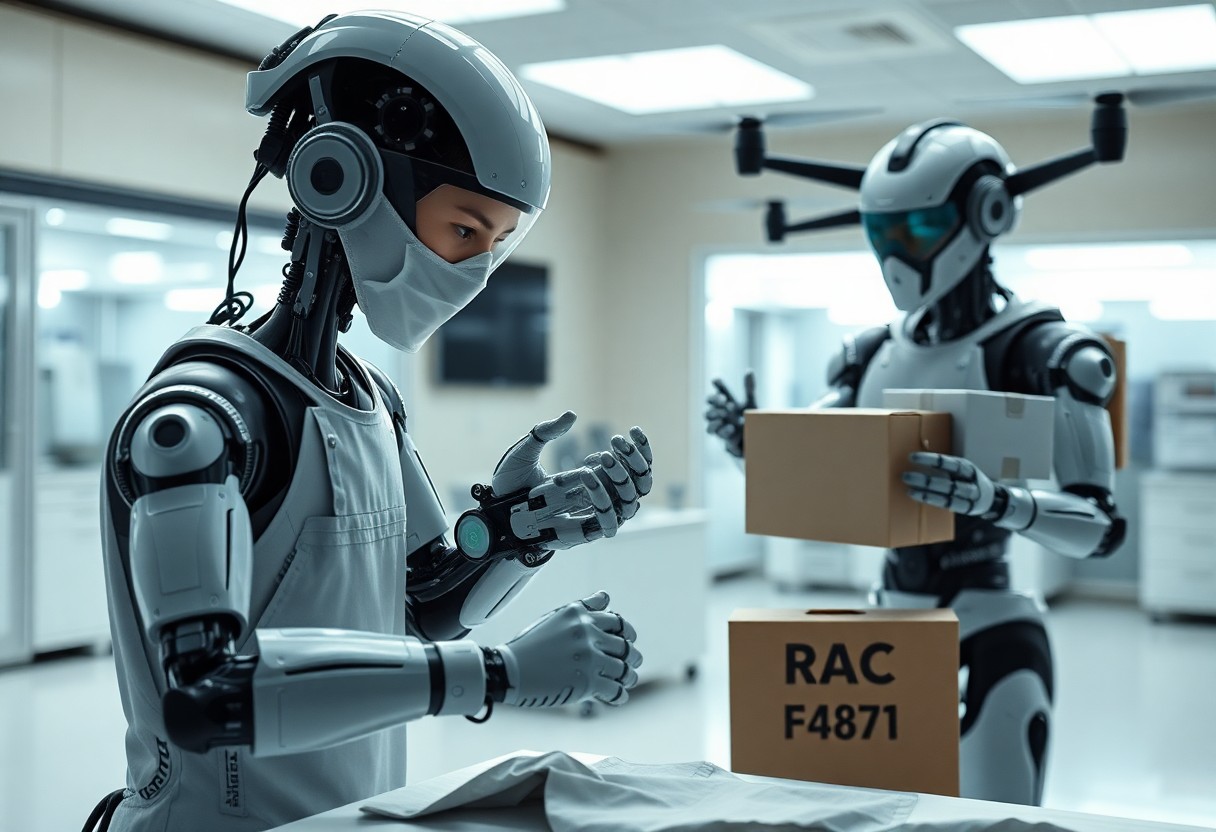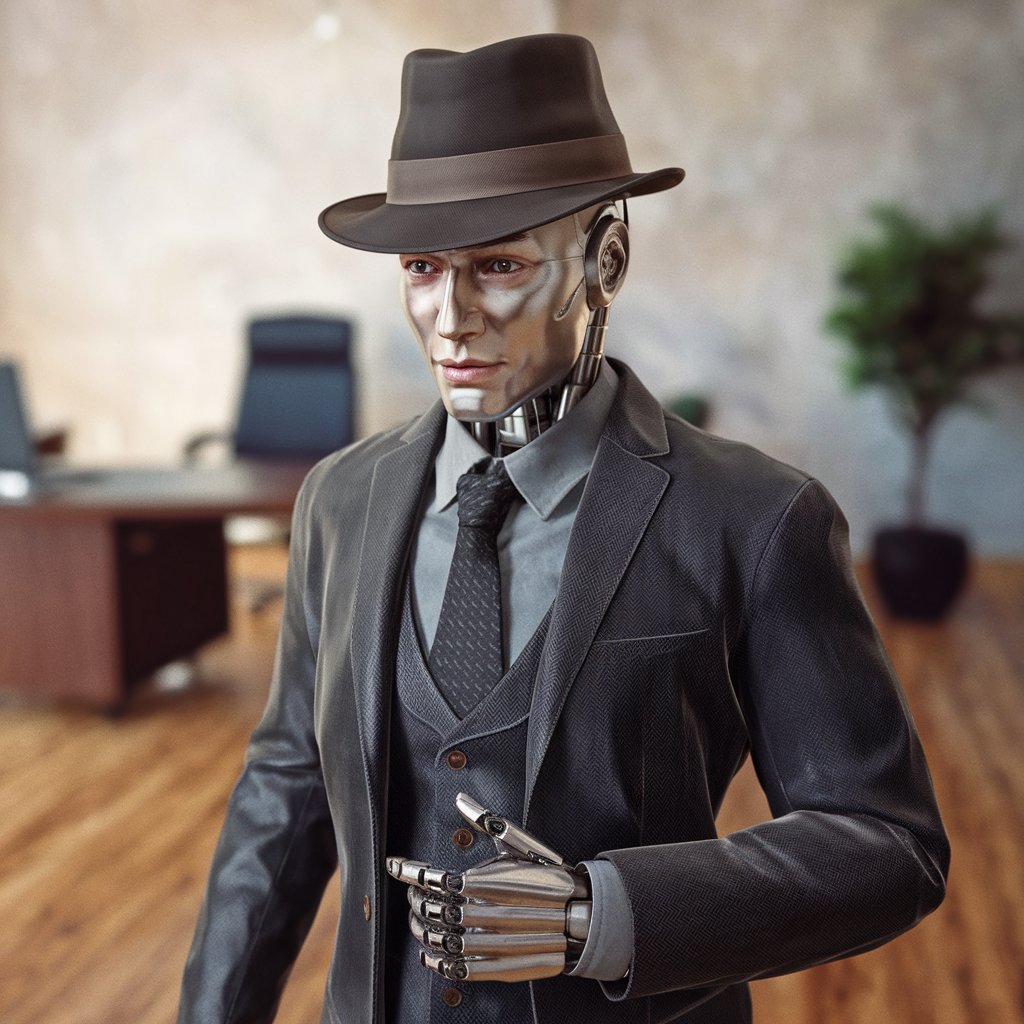Just launching on your robotics journey opens up a world of fascinating concepts to explore. Understanding the fundamentals of mechanics, electronics, and programming will empower you to create innovative solutions. Dive into topics like artificial intelligence, machine learning, and sensor technology to enhance your projects. Additionally, grasping the principles of automation and control systems can streamline your designs. This blog will guide you through important areas to focus on, ensuring your robotics adventure is both educational and fulfilling.
Understanding Robotics Fundamentals
As you commence on your robotics journey, grasping the fundamentals is necessary. Robotics encompasses numerous disciplines, including mechanical engineering, computer science, and electronics. By building a solid foundation in these areas, you will be well-equipped to design, build, and program your own robotic systems. Each element contributes to the seamless operation of robotic technologies, which continue to advance rapidly in various fields.
Historical Overview of Robotics
Behind the evolution of robotics lies a rich history that spans centuries, from early automata in ancient civilizations to the sophisticated machines we see today. Pioneers like Leonardo da Vinci sketched designs for mechanical knights, while the industrial revolution gave birth to machines that could perform specific tasks. The introduction of computers in the 20th century further accelerated robotic advancements, leading to innovations that continue to inspire and shape the future of technology.
Key Components of Robotics
Above all, understanding the key components of robotics is vital for your journey. These components include sensors, actuators, controllers, and power supplies, each playing a significant role in the functioning of a robot. Sensors enable the robot to perceive its environment, while actuators facilitate movement. Controllers serve as the brain, processing inputs and outputs to execute commands, and power supplies provide the necessary energy for operation.
Robotics integrates various key components to create systems that work harmoniously. Sensors, such as cameras and ultrasonic devices, gather data from the environment, allowing your robot to make informed decisions. Actuators, including motors and servos, translate those decisions into physical movement. The controller, often a microprocessor or microcontroller, processes inputs from sensors and sends commands to the actuators, while power supplies ensure that all components receive adequate energy. By understanding how these components interact, you can start building more complex and capable robotic systems.
Exploring Various Robotics Applications
One of the most exciting aspects of your robotics journey is exploring the diverse applications of robotics across various industries. From manufacturing to healthcare, robotics offers innovative solutions that enhance efficiency, safety, and productivity. By understanding different environments where robots operate, you can identify opportunities to adapt or create new technologies that cater to specific needs and challenges.
Industrial Robotics
Robotics plays a significant role in industrial settings, streamlining and automating production processes. By utilizing robots for tasks such as welding, painting, and assembly, companies increase efficiency and reduce the likelihood of human error. As you investigate into industrial robotics, you’ll find opportunities to develop systems that enhance operational workflows and promote workplace safety.
Service Robotics
By focusing on service robotics, you enter a realm where robots assist humans in various tasks that enhance quality of life. Whether it’s cleaning, delivering items, or providing companionship, service robots offer practical solutions in homes, hospitals, and public spaces. This field presents you with a chance to create robots that can learn and adapt, making them valuable partners in everyday activities.
Robotics in the service sector is rapidly evolving, driven by advancements in AI and machine learning. As you explore this domain, consider how service robots can address specific needs, improve user experiences, and assist in repetitive tasks. Developing intuitive robots that understand and respond to human emotions, for example, can significantly enhance their effectiveness and acceptance in society.
Essential Skills for Aspiring Roboticists
Any aspiring roboticist should focus on developing a strong foundation in both technical and soft skills. These skills will not only enhance your ability to design and build effective robots but also prepare you for collaboration and problem-solving in diverse teams. As you begin on your robotics journey, prioritize honing these imperative abilities to maximize your potential in this dynamic field.
Programming Languages and Tools
Beside mechanical knowledge, familiarity with programming languages such as Python, C++, and ROS (Robot Operating System) is vital. These languages and tools will allow you to code algorithms for robot behavior, control motions, and process sensor data. Mastering these tools ensures that you can implement your ideas effectively and adapt to new technologies as they emerge.
Mechanical and Electrical Skills
Below the surface of robotics lies an imperative blend of mechanical and electrical skills. Understanding mechanical design, fabrication techniques, and circuitry will empower you to build functional robots. You should become proficient in CAD software for design and learn about components like motors, sensors, and microcontrollers. These technical abilities will help you create well-rounded robotic systems that operate efficiently.
Skills in mechanical and electrical engineering are interwoven in the field of robotics. Familiarize yourself with concepts such as kinematics, dynamics, and control theory. Delve into electronics to grasp how circuits function and how to interface various components. Practical experience with prototyping and troubleshooting can profoundly enhance your understanding and capabilities, ultimately shaping you into a versatile roboticist equipped to tackle various challenges.
Robotics Design and Prototyping
Keep in mind that effective robotics design and prototyping can significantly enhance the functionality and usability of your robotic creations. From concept to realization, it’s imperative to approach your design process methodically, considering how each component interacts with others. This phase is where your ideas can take shape, leading to tangible, working models that pave the way for further development.
Design Principles for Robotics
Between aesthetics and functionality, you’ll find that balancing these elements is vital in creating robots that are not only efficient but also user-friendly. Emphasize clarity in function, ease of use, and reliability in your design to ensure your robot meets both user expectations and operational goals. Think about the end-user experience; how will they interact with your robot?
Prototyping Techniques and Tools
By employing various prototyping techniques and tools, you can bring your robotic designs to life and refine them through iterative feedback. Techniques such as 3D printing, CNC machining, and programmable microcontrollers can facilitate rapid prototyping and allow for adjustments based on testing and user input.
Robotics prototyping encompasses a range of methodologies that help you visualize and test your concepts before full-scale production. Utilizing platforms like Arduino or Raspberry Pi for electronics, or software tools such as CAD for design, empowers you to quickly build functional models. These tools not only aid in creating physical prototypes but also enable simulation and programming capabilities, ensuring that your robot can be adjusted effectively based on real-time testing and usage scenarios.
Innovations in Robotics Technology
Unlike traditional engineering fields, robotics technology is evolving at a rapid pace, integrating cutting-edge advancements that revolutionize how machines operate and interact with their surroundings. Staying up-to-date with these innovations is vital for anyone begining on a robotics journey. From artificial intelligence to enhanced sensors, each breakthrough opens up new possibilities for automation, efficiency, and creativity in robotic applications.
Artificial Intelligence and Machine Learning
Below the surface of robotic functionality lies the power of artificial intelligence and machine learning. These technologies enable robots to learn from data, adapt to changes in their environment, and improve their performance over time. By incorporating AI into your projects, you can enhance decision-making processes and create more intelligent, responsive systems that better serve your goals.
Sensor and Actuator Advances
Around the landscape of modern robotics, advancements in sensors and actuators are instrumental in enhancing the capabilities of robotic systems. These innovations provide more accurate input and finer control over robotic movements, allowing for improved precision and functionality in various applications.
Robotics is increasingly reliant on sophisticated sensors that can detect a wide array of inputs, such as temperature, light, and obstacles, along with advanced actuators that translate commands into precise movements. These enhancements enable you to create robust systems capable of navigating complex environments and performing intricate tasks. By exploring the latest developments in these technologies, you can significantly amplify the performance and reliability of your robotic creations, making them more effective in real-world applications.
Future Trends in Robotics
To stay ahead in your robotics journey, it’s imperative to explore future trends shaping the industry. The demand for smarter, more efficient machines ensures that advancements in AI, machine learning, and automation will redefine how we interact with technology. Insights into what lies ahead can be found in discussions about the Top 10 most important EE and ME concepts. Embracing these trends will pave your way to innovation and success in robotics.
Autonomous Systems
Any exploration of robotics will inevitably lead you to the exciting realm of autonomous systems. These systems are designed to operate independently, using sensory inputs and algorithms to make decisions. By mastering autonomous technology, you will be paving the way for applications in various fields, from transportation to manufacturing, where the potential for efficiency and safety is immense.
Human-Robot Interaction
Any robotics enthusiast should prioritize understanding human-robot interaction (HRI). This field focuses on creating seamless communication between humans and machines, making them more accessible and user-friendly. Mastering HRI will allow you to design robots that can collaborate effectively with people, making them invaluable tools in everyday situations.
Due to the growing role of robots in daily life, an effective HRI framework has become imperative. As you investigate deeper, you will find that successful interaction hinges on designing intuitive interfaces and understanding user expectations. By prioritizing HRI, you can enhance the usability of robots and contribute significantly to their integration into society, ultimately shaping more meaningful interactions between humans and machines.
To wrap up
Now that you’ve explored compelling concepts in your robotics journey, it’s time to probe into areas like machine learning, sensor integration, and robotics programming. By understanding these key concepts, you can enhance your ability to design and build effective robotic systems. Additionally, consider the ethical implications and the future of robotics in society, as these discussions will shape your understanding and responsibility as a developer. Embrace hands-on projects, collaborate with others, and continuously adapt to new technologies to ensure a rewarding and progressive robotics experience.






